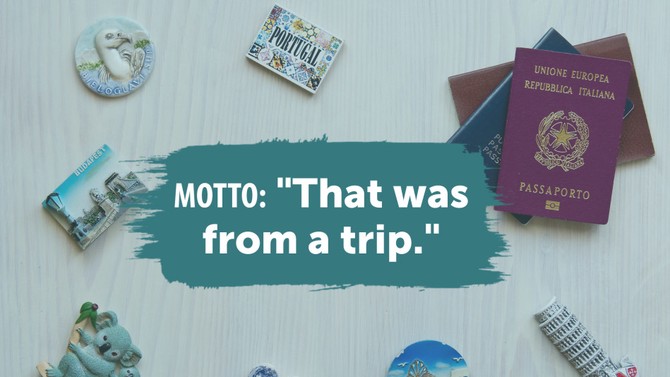What Your Clutter Is Trying to Tell You
Why is decluttering just so hard? The authors of New Minimalism reveal how your emotional style relates to the possessions you keep—and how you can finally get past it.
By Cary Telander Fortin and Kyle Louise Quilici
Archetype #1: Connected
SHADOW SIDE OF CONNECTED: Clinging
BLOCK: Sentimentality
HAS A HARD TIME LETTING GO OF: Gifts, handwritten cards, travel souvenirs, ticket stubs
The Connected archetype has an emotional, relational, and impassioned way of approaching the world. These people treasure family, friendships, and partnerships above all else. They love to make those they care about feel good. Connected types tend to be wonderful hosts, the people you can rely on to throw a great party, send you a birthday card, or remember that important date on the calendar.
Connected types dwell in the present; they are focused on whoever is in front of them in the moment. They are exceptional listeners who try their best to offer thoughtful and compassionate advice. Connected types act from a place of interrelatedness, bestowing a reverence upon the people and things in their lives.
Connected people will venture toward the shadow side of their emotional style when they confuse the physical object with the actual relationship or experience itself. They feel that if they give up the objects related to a relationship, they are devaluing the relationship; they’re afraid they will lose important people or memories if they don’t hold on to all the evidence.
The main thing blocking Connected types from releasing items is sentimentality. If an object is in any way linked to a relationship—such as a gift or a note, or a photograph or a souvenir from a shared experience—Clinging people will hold on to it even if they do not use or enjoy it.
Tool for Moving from Clinging Back to Connected
First, remember that your memories and experiences are separate from your possessions. We like to use the phrase “Collect memories, not things” to sum up the idea that it’s not actually the objects we love but the memories they reference. Start by first freeing yourself of the obligation to memorialize every event from your past with a physical memento. Trust that you will naturally recall specific memories or experiences as you continue to live out your days.
When deciding to part with an item of sentimental value, take a moment to “bless and release” it. Rather than dumping a broken travel token in the trash or throwing a gifted sweater in the donation bin, give yourself a moment to honor the item. Appreciate it and the person or circumstance that brought it into your life. Hug the item (or smell it or pat it) one last time, and say aloud an expression of gratitude, like “Thank you, ugly Christmas sweater. You came into my life as such a thoughtful gift, and I release you to keep someone else warm and happy this winter.”
BLOCK: Sentimentality
HAS A HARD TIME LETTING GO OF: Gifts, handwritten cards, travel souvenirs, ticket stubs
The Connected archetype has an emotional, relational, and impassioned way of approaching the world. These people treasure family, friendships, and partnerships above all else. They love to make those they care about feel good. Connected types tend to be wonderful hosts, the people you can rely on to throw a great party, send you a birthday card, or remember that important date on the calendar.
Connected types dwell in the present; they are focused on whoever is in front of them in the moment. They are exceptional listeners who try their best to offer thoughtful and compassionate advice. Connected types act from a place of interrelatedness, bestowing a reverence upon the people and things in their lives.
Connected people will venture toward the shadow side of their emotional style when they confuse the physical object with the actual relationship or experience itself. They feel that if they give up the objects related to a relationship, they are devaluing the relationship; they’re afraid they will lose important people or memories if they don’t hold on to all the evidence.
The main thing blocking Connected types from releasing items is sentimentality. If an object is in any way linked to a relationship—such as a gift or a note, or a photograph or a souvenir from a shared experience—Clinging people will hold on to it even if they do not use or enjoy it.
Tool for Moving from Clinging Back to Connected
First, remember that your memories and experiences are separate from your possessions. We like to use the phrase “Collect memories, not things” to sum up the idea that it’s not actually the objects we love but the memories they reference. Start by first freeing yourself of the obligation to memorialize every event from your past with a physical memento. Trust that you will naturally recall specific memories or experiences as you continue to live out your days.
When deciding to part with an item of sentimental value, take a moment to “bless and release” it. Rather than dumping a broken travel token in the trash or throwing a gifted sweater in the donation bin, give yourself a moment to honor the item. Appreciate it and the person or circumstance that brought it into your life. Hug the item (or smell it or pat it) one last time, and say aloud an expression of gratitude, like “Thank you, ugly Christmas sweater. You came into my life as such a thoughtful gift, and I release you to keep someone else warm and happy this winter.”
Published 01/02/2018


